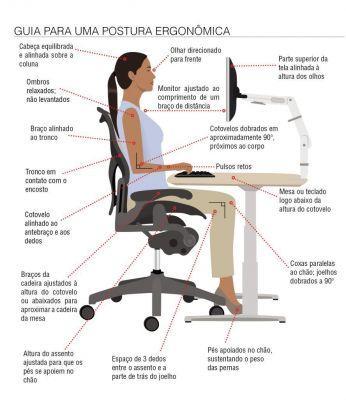
La sedentary life unites many people but unfortunately it is not a positive condition because you stop spending a lot of time is likely to generate serious physical problems, such as cardiovascular disease, diabetes, back pain and lower joint mobility.
To combat this problem, the ideal would be to be able to carry out regular physical activity during the week but also sit properly while working on the computer, maintaining a correct posture, is a good practice that should not be underestimated.
What is the correct posture
Find the correct position for sitting at the desk is not simple, but necessary.
Often we tend to hunch over and stretch too far towards the screen but this is the first mistake to avoid. Instead, it is necessary keep your back straight, but at the same time relaxed, in order to avoid general tension or stretching of the neck.
How to support the back
Le ergonomic chairs desk are designed for adequately support the body and reduce stress and friction on bones and muscles while sitting. These chairs can be quite expensive but there are some workarounds.
If the chair you usually use does not have lumbar support, you can place a small towel roll it up or a pillow between the backrest and the lower back. This support should help maintain good posture. On the market there are also lumbar cushions created specifically for this purpose.
Take regular breaks
Sit down for long hours it can reduce blood flow and cause muscle fatigue.
To avoid this, when possible, get up from your desk at regular intervals and moving around a bit. Instead of a few long breaks, better prefer one or two minutes of stop every 30 minutes or at most 60, during which to take a few steps, raise the calves and shrug the shoulders. Those who work from home can also do some lunges or squats.
Other practical tips
Adjust the chair in the right way
Also 'seat height is crucial. For this reason, before starting to work it is necessary to adjust the seat until, while seated, the thighs are parallel to the ground.
Bend your knees at right angles and make sure they are at the same height as your hips or slightly below so that your body weight is evenly distributed across your hips.
I piedi must rest entirely on the floor and in case you don't get there of course you can help us with a stool or a footrest. If you wear them shoes with i heels and you are forced to sit at your desk for many hours, if you have the chance, it would be better remove them from time to time to rest your foot and ankle.
Finally, better don't spend too much time with your legs crossed because this position can reduce blood flow to the legs and cause muscle fatigue.
also the arms, resting on the work surface, they should be parallel to the ground.
Keep the screen at eye level
position the screen correctly computer in front of you, sit at your desk and adjust the monitor until you are a about an arm away.
In addition to the distance, theheight has its importance. The top of the screen Of computer it shouldn't be more than 5 centimeters above eye level. Monitors that are too low or too high, in fact, can strain the neck and eyes.
If the screen is lower than these parameters, you can use specially designed monitor stands or, in their absence, a stack of books to be placed between the desk and the base.
Position the keyboard correctly
If the keyboard too high or too far away, straining to type can cause muscle fatigue and pain in the hands and arms. To avoid it it should be placed in front of the computer and at a distance that can be reached comfortably. Also important to leave 10-12 inches between the keyboard and the bottom edge of the desk, so that your wrists have room to rest on while typing.
Use the mouse correctly
Il mouse computer should be there on the same surface as the keyboard and be easily accessible. While using it the wrist it should be relaxed, arm slightly to the side of the torso and hands slightly below the elbows.
Also pay attention to the model: an ergonomic mouse helps prevent wrist fatigue and adapts to the natural shape of the hand.
Keep items close at hand
Repeated twisting and stretching can cause joint pain and muscle fatigue. The objects that are used most often such as pens, mobile phone or note sheets, they should therefore be effortlessly reachable from the chosen location.
Use headphones for phone calls
If you are often engaged in job calls and in the meantime work on the PC, using speakerphone or headphones should be the first option. Bending the neck to hold the phone can cause muscle stiffness, pain and even damage to the ligaments over time.
It is also useful to perform the exercises for the contracted shoulders, so as to relax the whole part.
LnB-Motion gymnastics is indicated to improve posture problems.


























